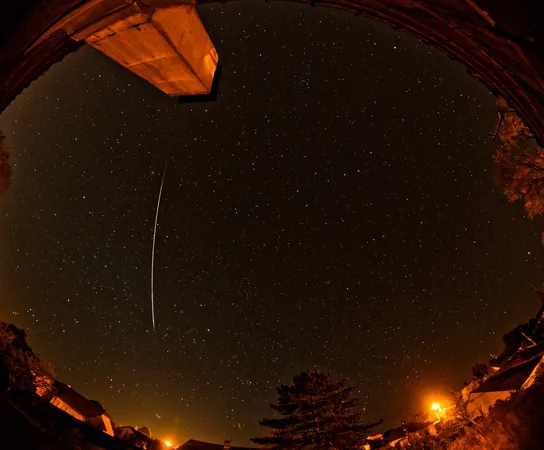
October Meteor Shower Mania: Prepare for the Orionids!
2024-09-27
Author: Mei
October Meteor Shower Mania: Prepare for the Orionids!
As we dive into the heart of October, stargazers around the globe are in for a thrilling treat: a significant surge in meteor activity! Known for its captivating displays, the month features the highly anticipated Orionid meteor shower, alongside a variety of lesser-known showers lighting up the night skies.
The Orionids, renowned for their spectacular performance, will be at their peak on October 21st. What makes this year's event even more exciting is that the celestial show can be enjoyed equally from both the northern and southern hemispheres, a rare opportunity that promises to delight observers everywhere. Although sporadic meteor activity in the southern hemisphere tends to decline during this time, the Orionids' robust display offers a much-needed celestial boost.
As we prepare for these astronomical wonders, it's important to note that the new moon on October 2nd will create ideal conditions for observation, as the dark skies will allow for unobstructed views of the meteors. During the upcoming weekend, a waning crescent moon will appear in the morning, which should not interfere with night sky watching. Observers in mid-northern latitudes can expect to see around 4 meteors per hour in the evenings and potentially up to 11 in the early hours, while viewers in the tropics might catch about 3 in the evenings and 8 in the mornings.
Where to Look and When?
This week’s meteor activity is not only about the Orionids; be on the lookout for the Southern Taurids (STA). As we encounter debris from comet 2P/Encke, these meteors will become increasingly visible until late November. The Southern Taurids display two distinct components, with the early activity occurring from September 28 to November 2. Their peak is expected on October 14th.
The radiant of the STA is located in southeastern Pisces. With optimal viewing around 2 AM local time, observers can expect rates of about 3 meteors per hour. These meteors travel at a moderate speed of around 30 km/sec, making for a charming, graceful display.
In addition, the Daytime Sextantids (DSX) are active from September 9 to October 9, peaking on September 27th. While viewing these meteors is quite challenging due to their proximity to the sun, early risers may catch glimmers just before dawn, with their radiant located in central Sextans.
Sporadic Meteors: A Hidden Bonus!
In addition to the major showers, sporadic meteors also contribute significantly to the night sky's excitement. During this period, observers can expect to spot around 10 sporadic meteors per hour in the northern hemisphere during the pre-dawn hours, while the southern regions will have slightly lower numbers.
Before you grab your blankets and settle down for a night under the stars, ensure you're well-prepared: find a dark area away from city lights, bring comfortable seating, and consider a planisphere or stargazing app to help navigate the night sky. Make this October a memorable month of celestial exploration as you witness the dazzling dance of meteors gracing our atmosphere! Don't miss out – who knows what spectacular sights the universe has in store for us this season?


 Brasil (PT)
Brasil (PT)
 Canada (EN)
Canada (EN)
 Chile (ES)
Chile (ES)
 Česko (CS)
Česko (CS)
 대한민국 (KO)
대한민국 (KO)
 España (ES)
España (ES)
 France (FR)
France (FR)
 Hong Kong (EN)
Hong Kong (EN)
 Italia (IT)
Italia (IT)
 日本 (JA)
日本 (JA)
 Magyarország (HU)
Magyarország (HU)
 Norge (NO)
Norge (NO)
 Polska (PL)
Polska (PL)
 Schweiz (DE)
Schweiz (DE)
 Singapore (EN)
Singapore (EN)
 Sverige (SV)
Sverige (SV)
 Suomi (FI)
Suomi (FI)
 Türkiye (TR)
Türkiye (TR)
 الإمارات العربية المتحدة (AR)
الإمارات العربية المتحدة (AR)